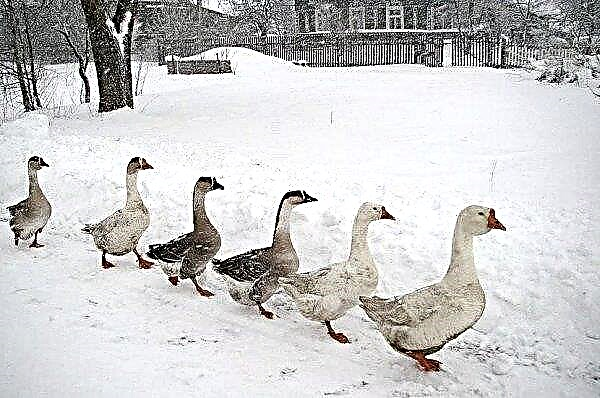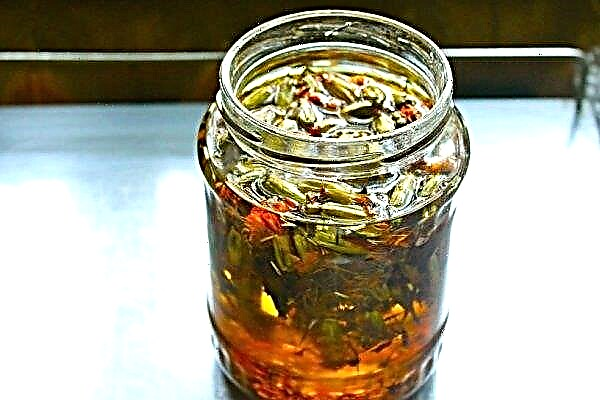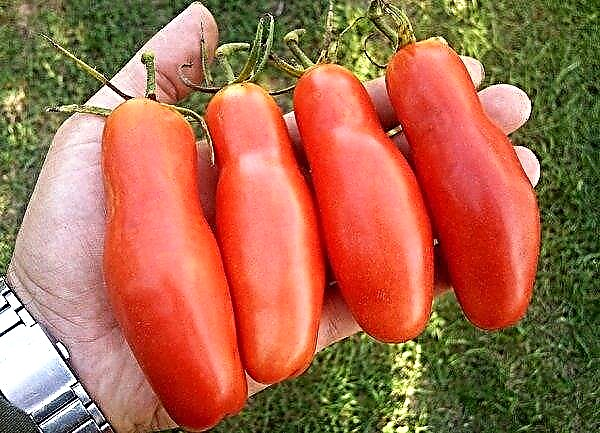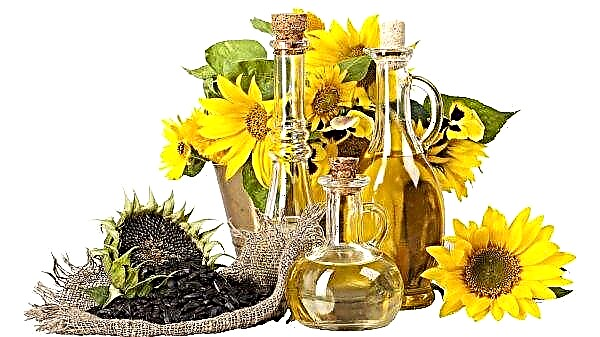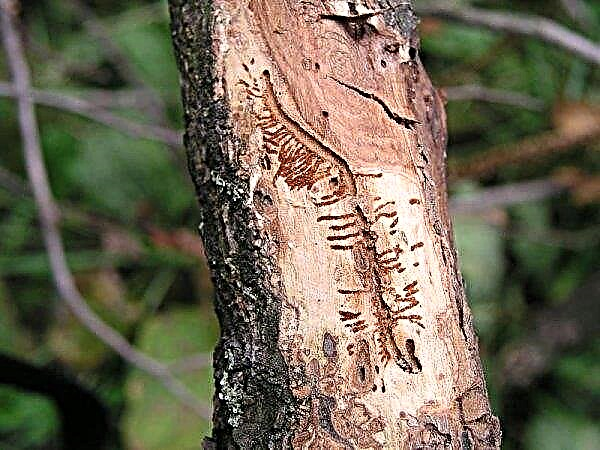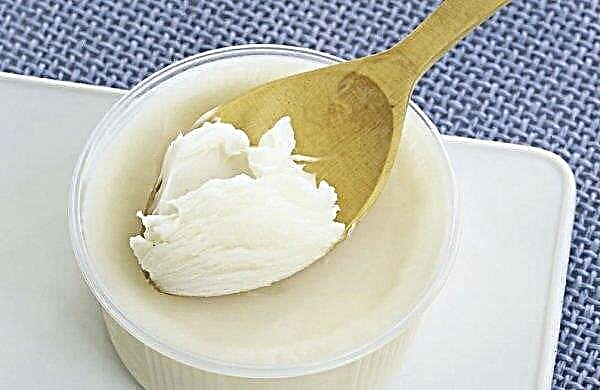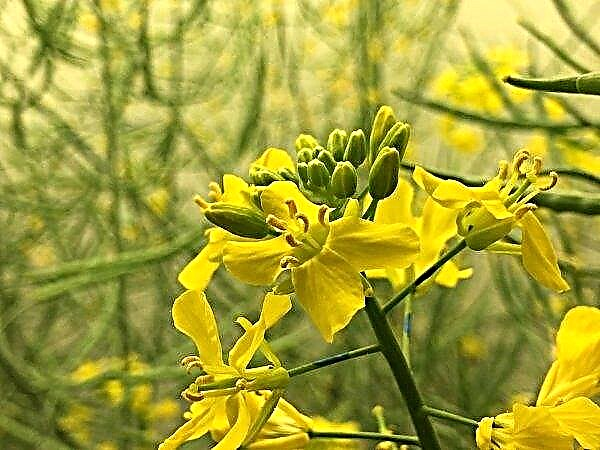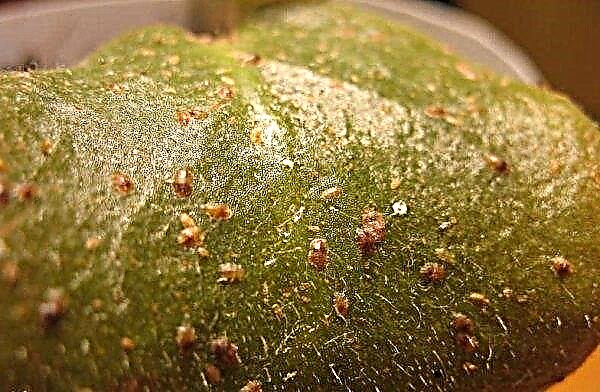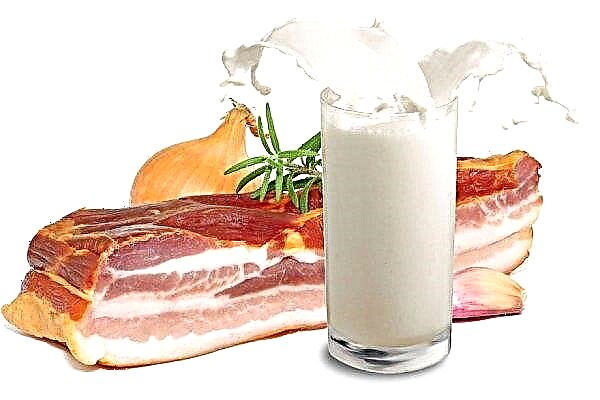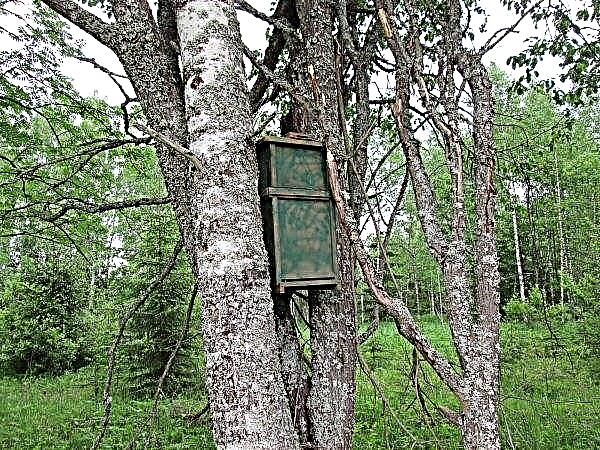Thuja is a coniferous, year-round green plant in the form of a bush or tree. Due to its symmetrical shape, it is often used for landscape design and landscaping. It is not in vain that the tree is called “royal”; in the royal courtyards, various decorative figures, hedges and corners were made from thuja. The scenery is complemented by the planting of juniper - a shrub from the Cypress family. Gardeners and summer residents are increasingly asking themselves questions: what varieties of thuja and juniper exist and how to grow plants in their area.
Features and Benefits of Thuja
Thuja has many varieties. Each species is unique in its own way and has different characteristics.
Did you know? Since ancient times in China, young shoots of thuja have been used as a bactericidal, sedative and as a drug for insomnia.
Signs by which you can recognize the thuja:
- Height 70 m, diameter up to 6 m. Garden trees usually do not grow above 20 m.
- Scaly and strong needles of green color in adult specimens, in young she is light. Every 5 years, branches and needles change.
- The tree bears fruit from the first year of life by inconspicuous fruits with small grains.
- The male flowers bloom a yellow-white hue, and the female yellow-green. By autumn, the flowers dry out and turn brown, and fall over time.
- The characteristic coniferous smell.
- Column-shaped or pyramidal crown.
 The tree blooms in spring from April to May for two weeks. Harvested seeds germinate for two years from ripening. The average lifespan of a thuja is 150 years.
The tree blooms in spring from April to May for two weeks. Harvested seeds germinate for two years from ripening. The average lifespan of a thuja is 150 years.
- Thuja cultivation has many advantages:
- ease of care;
- frost resistance;
- aesthetic beauty;
- coniferous smell;
- variety of forms;
- the ability to create various shapes;
- longevity.
Frost-resistant and fast-growing thuja
For Russia, including the Moscow Region, trees should have resistance to cold, because minus temperatures in winter are pronounced. It is important not only to overwinter a variety, but also to maintain an excellent appearance. Popular winter-hardy varieties: Brabant, Kolumna, Fastigiata. They are resistant to frost, and if they lose their neatness during the winter, they will regain it by spring.
Important! To avoid rust on the thuja, it is not recommended to plant it next to the mountain ash and apple tree.
Kolumna
The Kolumna variety is frost-resistant and especially popular among various types of arborvitae. Its peculiarity lies in the columnar symmetrical crown, which can reach 1.5 m. Tree growth is very progressive, about 40 cm per year. It grows on average up to 10 m. The plant does not require special soil, it can grow equally well on any land, even on acidic and alkaline.
Video: thuja Kolumna
Brabant
Thuja Brabant is often used to decorate plots and gardens. The increase in height per year is 20 cm in height and about 30 cm in diameter. The tree looks great in living corners and fences, the effect of green walls. The plant easily adapts to cold and heat, but is very demanding on humidity. It is better to plant it in the lowlands, where underground water lies close. In Moscow suburbs, tui can be purchased at any nursery.
The plant easily adapts to cold and heat, but is very demanding on humidity. It is better to plant it in the lowlands, where underground water lies close. In Moscow suburbs, tui can be purchased at any nursery.
Video: thuja western Brabant
Fastigiata
The Fastigiata variety is represented by tall and fast-growing plants. The crown has the shape of a column. Each year, the tree has a fast growth and increases by 30 cm in height and 5 cm in diameter. An adult, formed plant up to 15 m high and with a crown width of about 3 m. The aroma of needles is very pronounced resinous. The color of the needles is dark green. Outwardly, the variety is similar to cypress. The tree has a high life expectancy of 200 years and is not afraid of the cold.
Junipers growing fast
Junipers in the suburban area have many positive qualities. They quickly expand in breadth and take up a lot of space around them. This allows you to complement unfinished landscape compositions. It is common for a plant to clean the air of dust and toxic urban rain. Growing shrubs in the country, their fruits can be used as a means for traditional medicine.
Did you know? Juniper life expectancy can reach 600 years.
They make decoctions and cosmetic baths. All types of juniper are especially resistant to cold, harsh winters are not an obstacle for them. The plant is cost-effective and unpretentious in care. The most important condition for growth remains a wet landing site. Juniper is not tall - 30 cm, but its width can reach 3 m. After 3 years of life, 15 cm is added to the growth.
Blue Arrow
The Blue Arrow variety is most often used by designers for hedges. The size of a mature juniper is 2-3 m in height. They are resistant to cold, do not require much moisture. The needles have a blue tint and a pleasant aroma. Fruits are represented by small blue cones. The shape of the crown is slightly unusual, resembles an arrow. The tree feels great on rocks and cobblestones.
Video: juniper rocky Blue Arrow
Virgin hetz
Virgin Hetz is a particularly sophisticated variety. Its branches are directed vertically, and the size is about 5 m. Such a plant is rational to use for decorating small areas due to its harmony. The needles attract attention with its gray-blue color.
Prince of Wales
The Prince of Wales variety is a small bush about 30 cm high and 2.5 m wide. In the warm season, the color of the needles is blue, in winter it changes to red or brown. The variety is one of the most popular and common in Russia. It is used not only for beauty, but also to strengthen the slopes.
Important! During periods of summer drought, plants should be abundantly watered with clean water. The volume of water per week should be at least 20 liters, depending on the size of the shrub.
Tui and junipers have unusual beauty and various shades. They will become an appropriate decoration for any garden. Their combination with other plants allows you to create real miracles of landscape design, and ease of care will make it possible even for an amateur gardener to do this.


